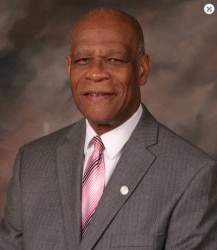“And Jesus increased in wisdom and stature and in favor with God and man”. (Luke 2:52)
Christian leadership development moves steadily from the servanthood of discipleship to apostleship without ever discarding the robes of the former. Leaders form a distinct identity and role which are developed over time. Are leaders born or made? Is there room for leadership identity formation? Do current leaders have a duty to foster leadership identity and formation in others? When does it all begin?
Whereas leadership identity has been studied in higher education settings (Komives et al, 2005, 2006; Mckim et al, 2015), this article proposes that such development should begin much earlier, especially in the adolescent and pre-puberty period when other developmental stages are beginning to reach maturity. There is a definite similarity between leadership identity and development in the preparation of Jesus’ disciples and several modern developmental theories. Biblical leadership stories point to similarities of development in the disciples and modern leadership identity formation theories. Leadership identity and faith maturity formation should encompass psycho-social, spiritual, moral, career, cultural, racial, occupation and formation theories. In every student, there is room for leadership identity development.
The disciples followed first before they eventually led, working through a series of psycho-social, emotional, spiritual, cultural, career, racial and developmental crises/stages, honed by ministry opportunities in a three-year internship period of measured growth from discipleship to eventual apostleship. Additional biblical examples abound in Joseph, Samuel, David, Jeremiah, Josiah, Timothy, Gideon, Esther, Deborah, Samson, Moses and Joshua. Context, mentorship example and opportunity provided a fruitful environment for the Spirit’s work.
Several development theorists provide a continuum from the simple to the complex: Long (2012) proposes a construct whereby maturing faith identity is at its optimum when integrated with psycho-social and emotional growth stages respectively building on the work of Erikson’s (1958) and Marcia’s (1993) identity status theories describing crisis to commitment. Other stages can be integrated in faith maturity: moral development in Kohlberg’s (1958) study consisting of the reasoning stages of right and wrong, minority development in the pre-encounter, encounter, immersion and integration stages (Cross, 1971; Helms, 1990), cultural identity development (Atkinson, Morten & Sue, 1993) with the phases of conformity, dissonance, resistance/immersion, introspection, articulation and awareness, and occupational identity (Callahan, 2019).
Every student should have the opportunity of an integrated curriculum-in-context, with leadership opportunities provided, especially from ages 12 to 18 as discipleship begins to mature into apostleship. These opportunities must yet retain the coat of discipleship in a happy blend to produce ultimate servant leadership.
The differentiating and distinguishing essence of Seventh-day Adventist education is its conscious effort to foster and develop leadership through a unique, calibrated, and deliberate blend of purposeful opportunities mediated by church, home, and school. We are developing each student’s individual leadership identities.
It takes time for faith to mature. What better place than in a Seventh-day Adventist school where faith maturity and all the development phases can work in tandem, orchestrated by spirit-filled mentors of church, home, and school? Let all the children be taught of the Lord.

